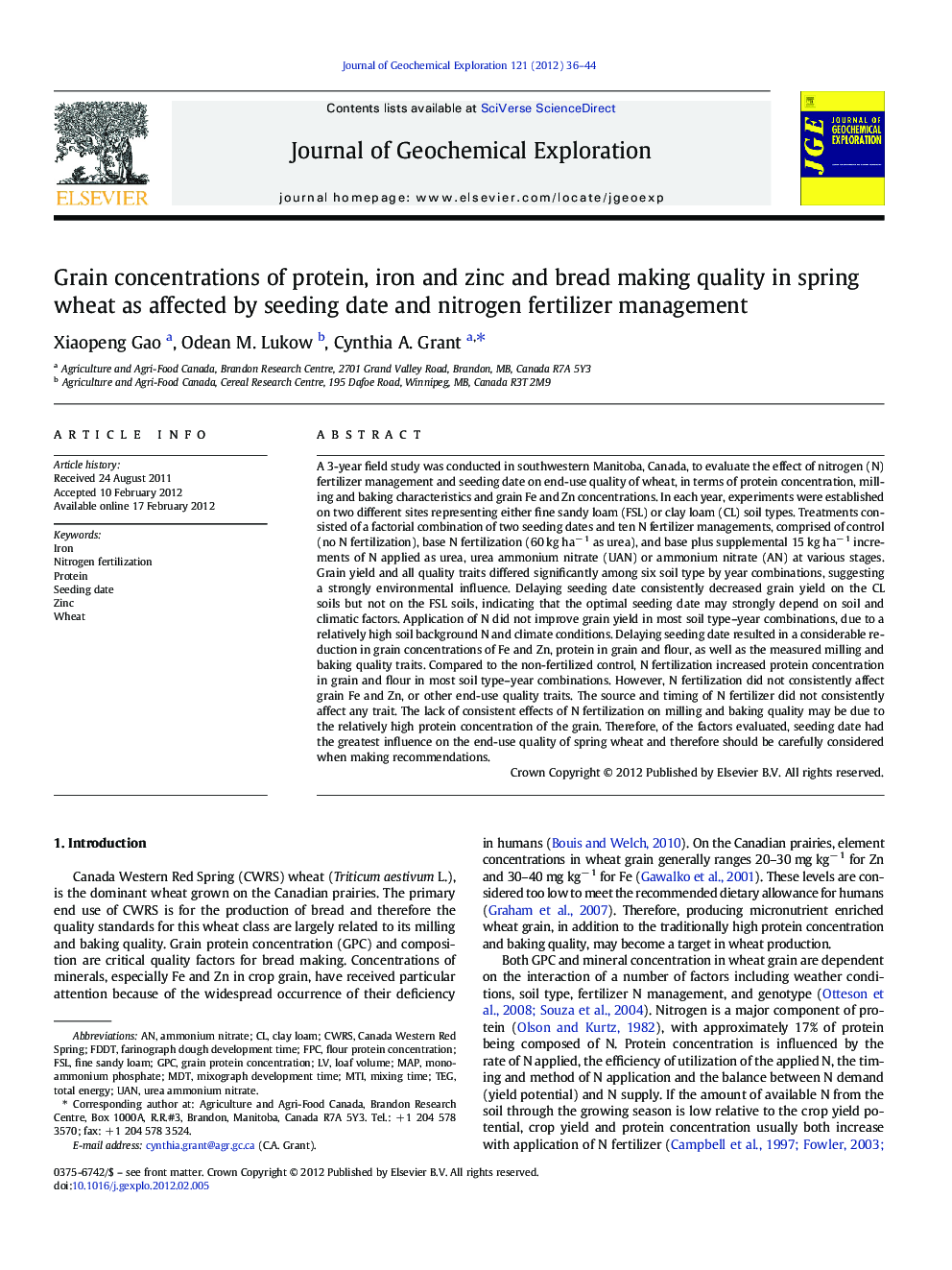| کد مقاله | کد نشریه | سال انتشار | مقاله انگلیسی | نسخه تمام متن |
|---|---|---|---|---|
| 4457646 | 1620935 | 2012 | 9 صفحه PDF | دانلود رایگان |

A 3-year field study was conducted in southwestern Manitoba, Canada, to evaluate the effect of nitrogen (N) fertilizer management and seeding date on end-use quality of wheat, in terms of protein concentration, milling and baking characteristics and grain Fe and Zn concentrations. In each year, experiments were established on two different sites representing either fine sandy loam (FSL) or clay loam (CL) soil types. Treatments consisted of a factorial combination of two seeding dates and ten N fertilizer managements, comprised of control (no N fertilization), base N fertilization (60 kg ha− 1 as urea), and base plus supplemental 15 kg ha− 1 increments of N applied as urea, urea ammonium nitrate (UAN) or ammonium nitrate (AN) at various stages. Grain yield and all quality traits differed significantly among six soil type by year combinations, suggesting a strongly environmental influence. Delaying seeding date consistently decreased grain yield on the CL soils but not on the FSL soils, indicating that the optimal seeding date may strongly depend on soil and climatic factors. Application of N did not improve grain yield in most soil type–year combinations, due to a relatively high soil background N and climate conditions. Delaying seeding date resulted in a considerable reduction in grain concentrations of Fe and Zn, protein in grain and flour, as well as the measured milling and baking quality traits. Compared to the non-fertilized control, N fertilization increased protein concentration in grain and flour in most soil type–year combinations. However, N fertilization did not consistently affect grain Fe and Zn, or other end-use quality traits. The source and timing of N fertilizer did not consistently affect any trait. The lack of consistent effects of N fertilization on milling and baking quality may be due to the relatively high protein concentration of the grain. Therefore, of the factors evaluated, seeding date had the greatest influence on the end-use quality of spring wheat and therefore should be carefully considered when making recommendations.
► It is desirable to produce crop grain with good end-use quality.
► We examined the interactive effect of N and seeding date on grain quality.
► Seeding date and environmental condition showed the greatest influence.
► Lack of a strong response to N suggests a relatively high N supply from the soil.
► Results are useful for agronomic management practices.
Journal: Journal of Geochemical Exploration - Volume 121, October 2012, Pages 36–44